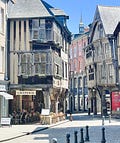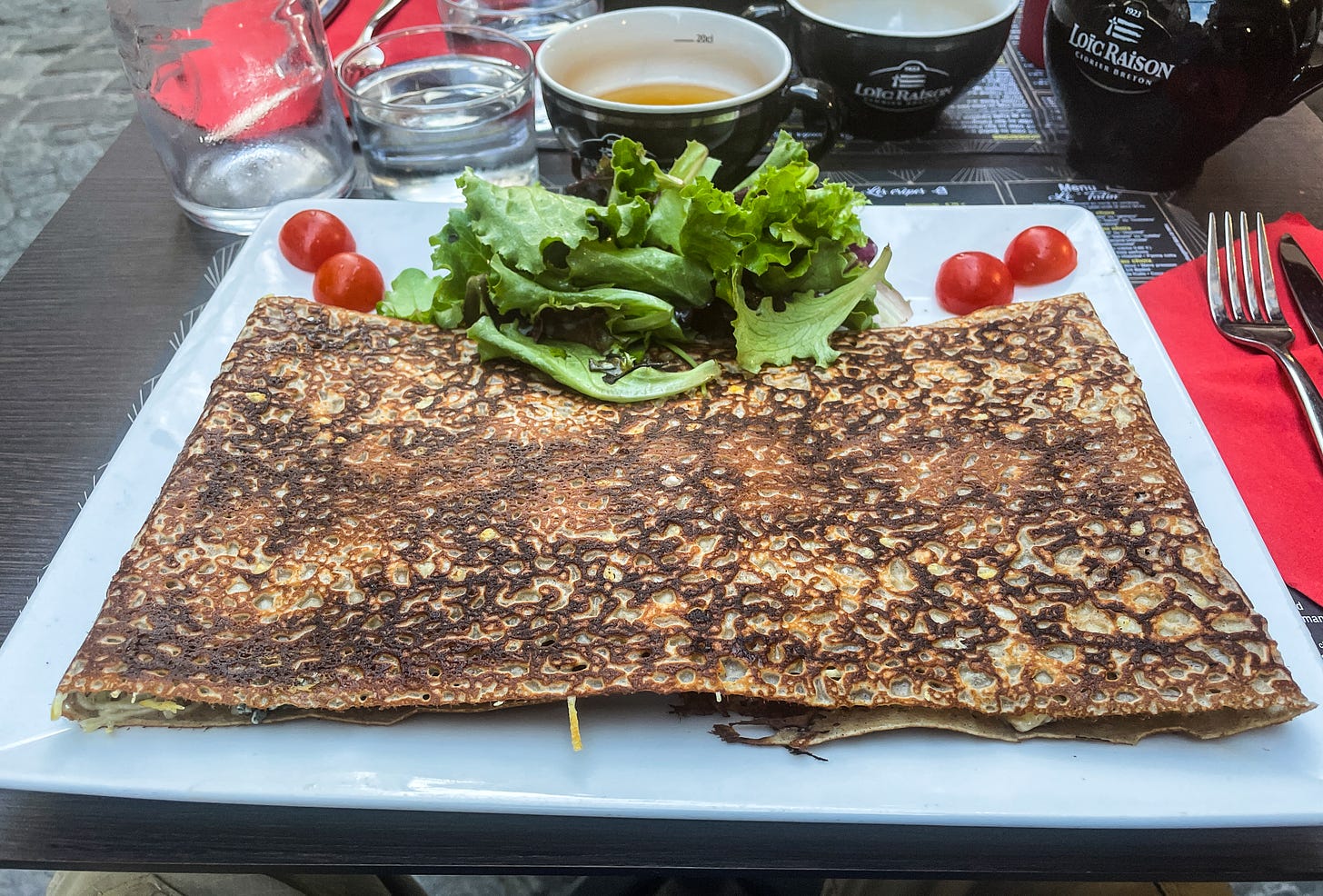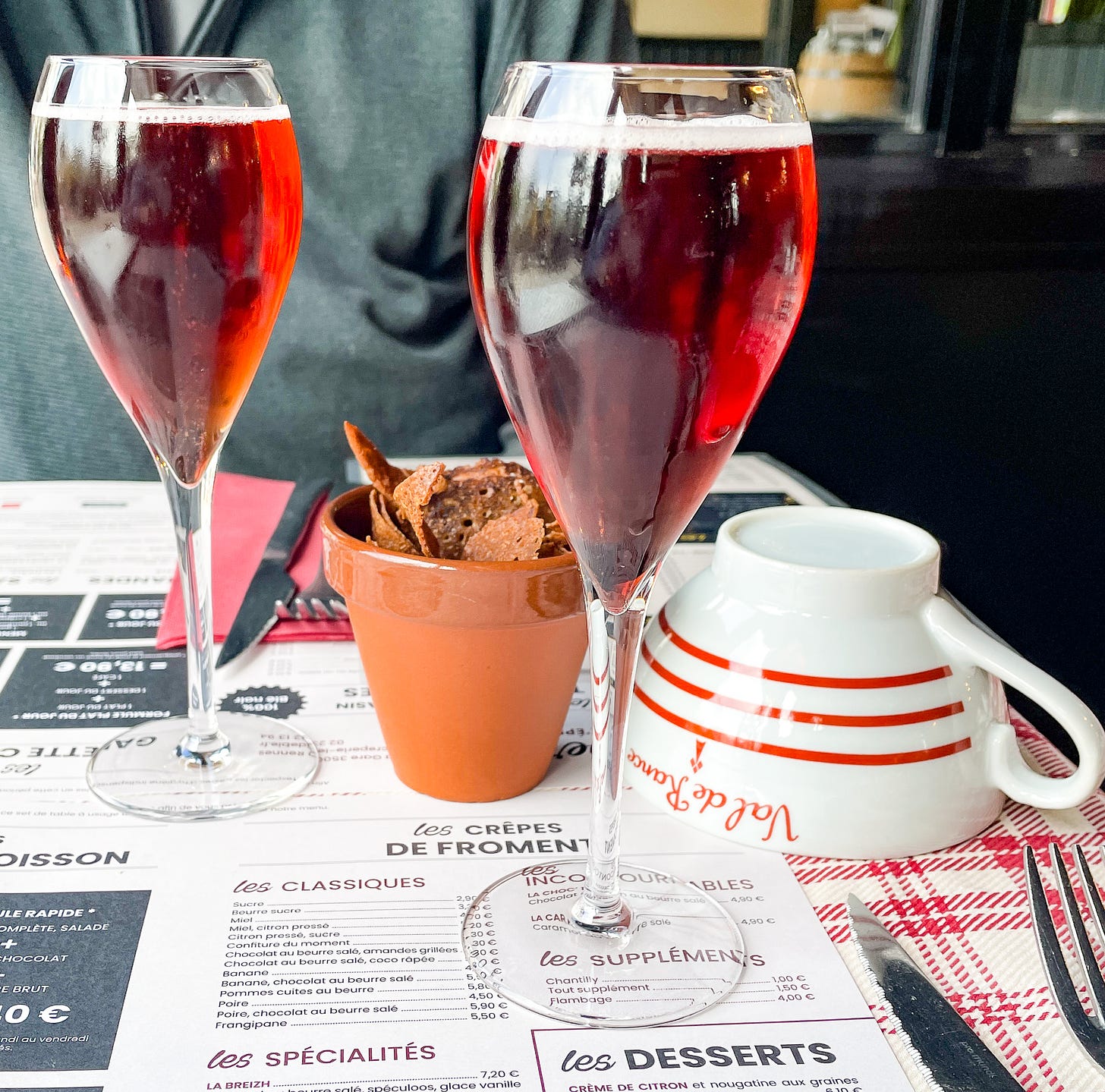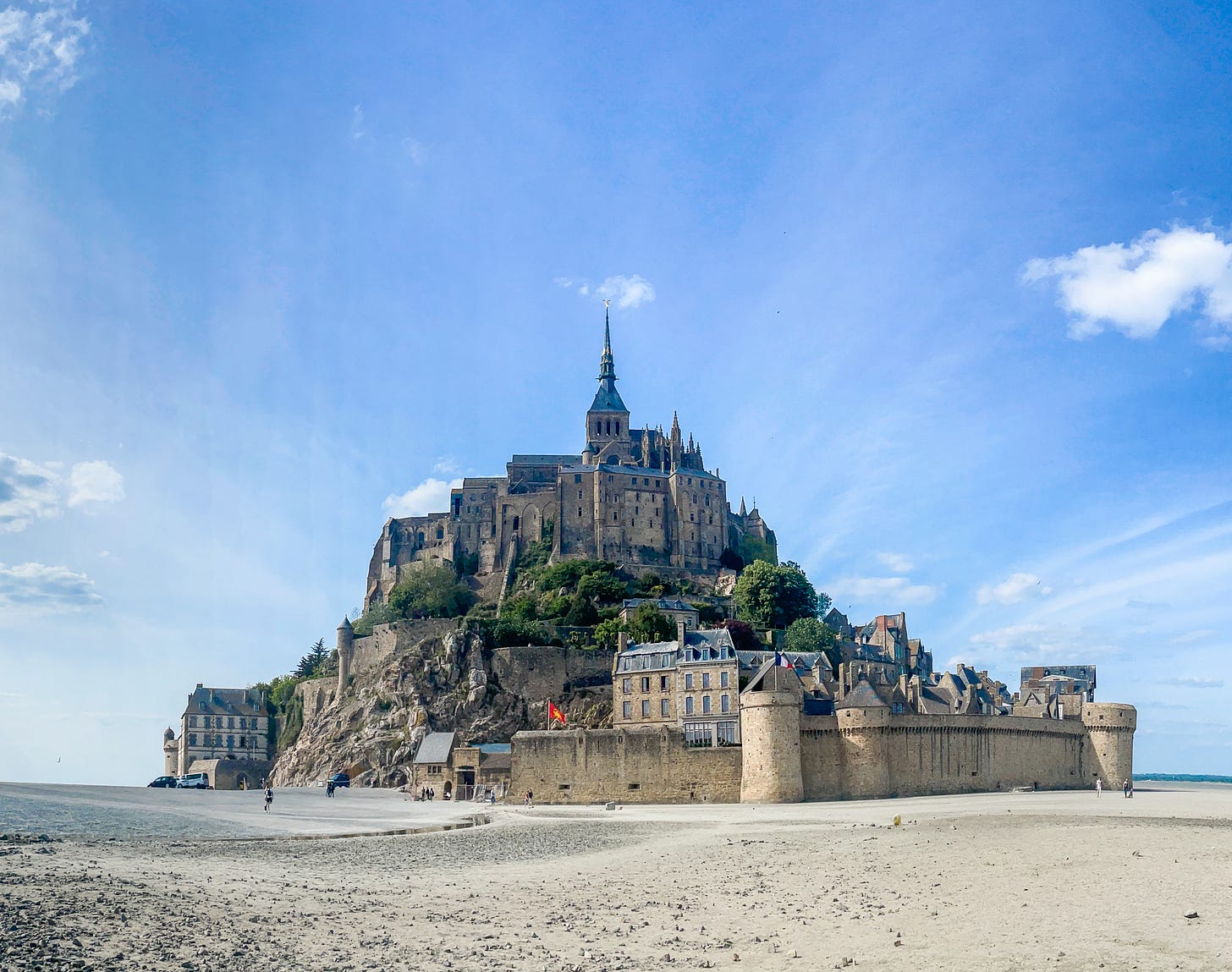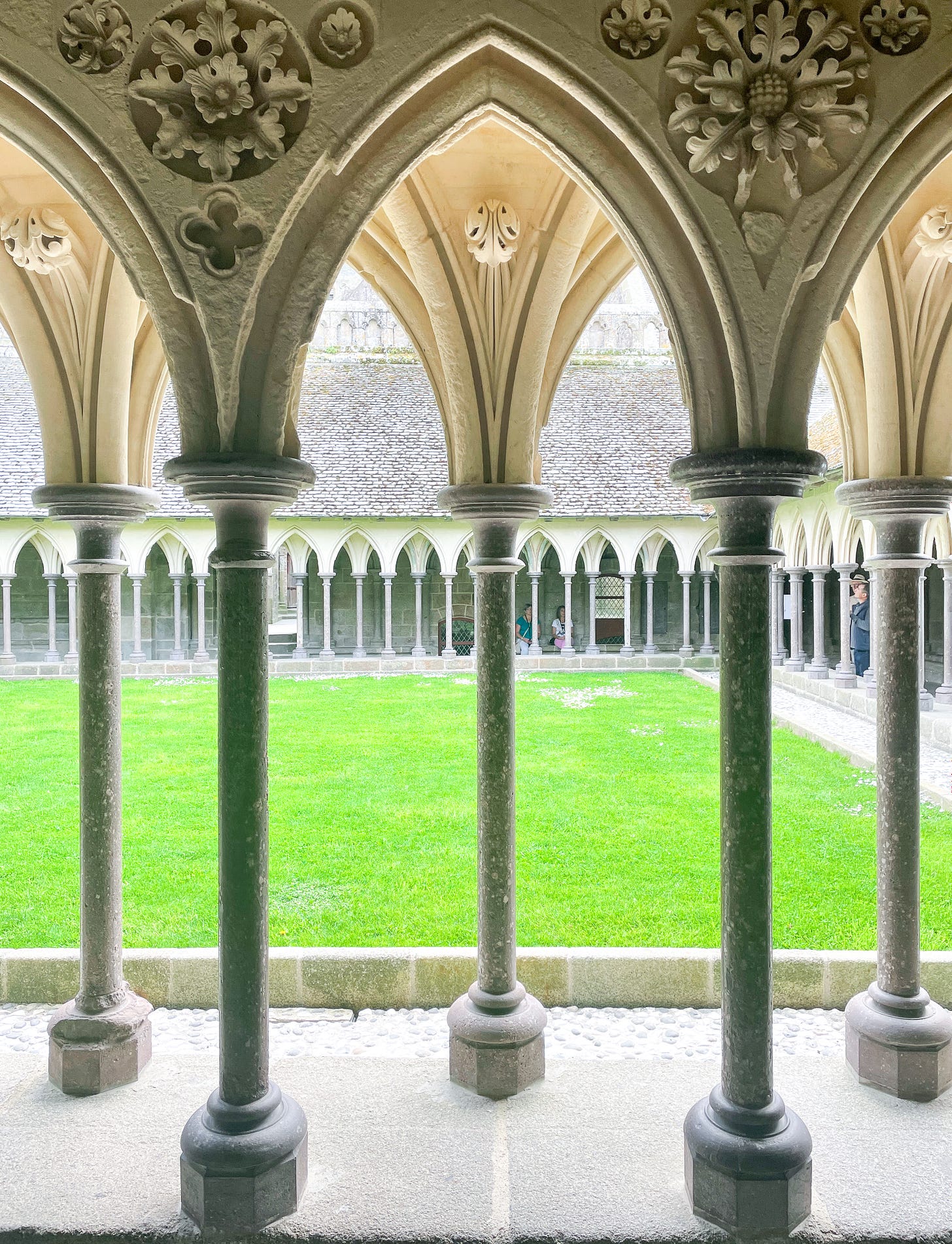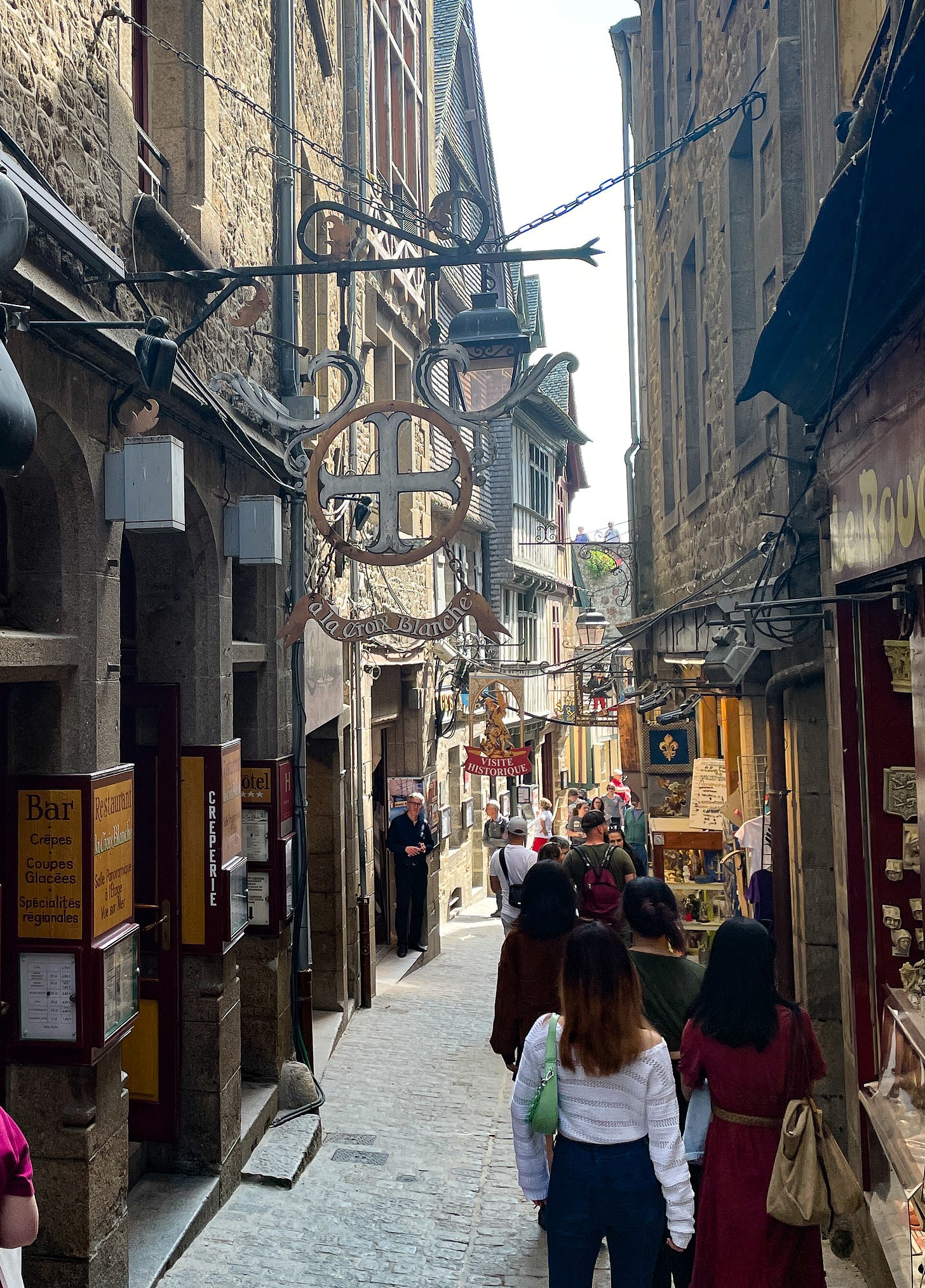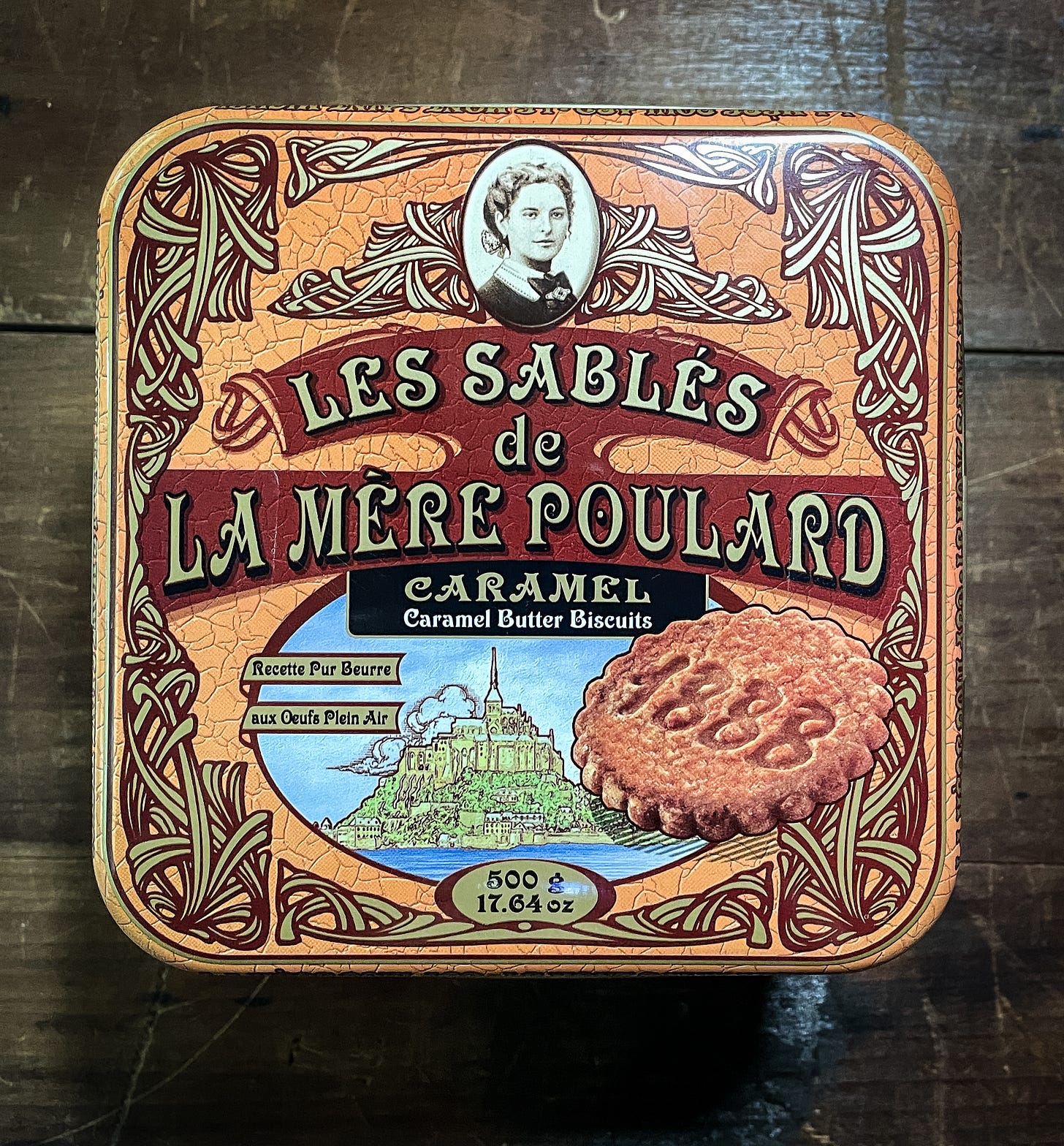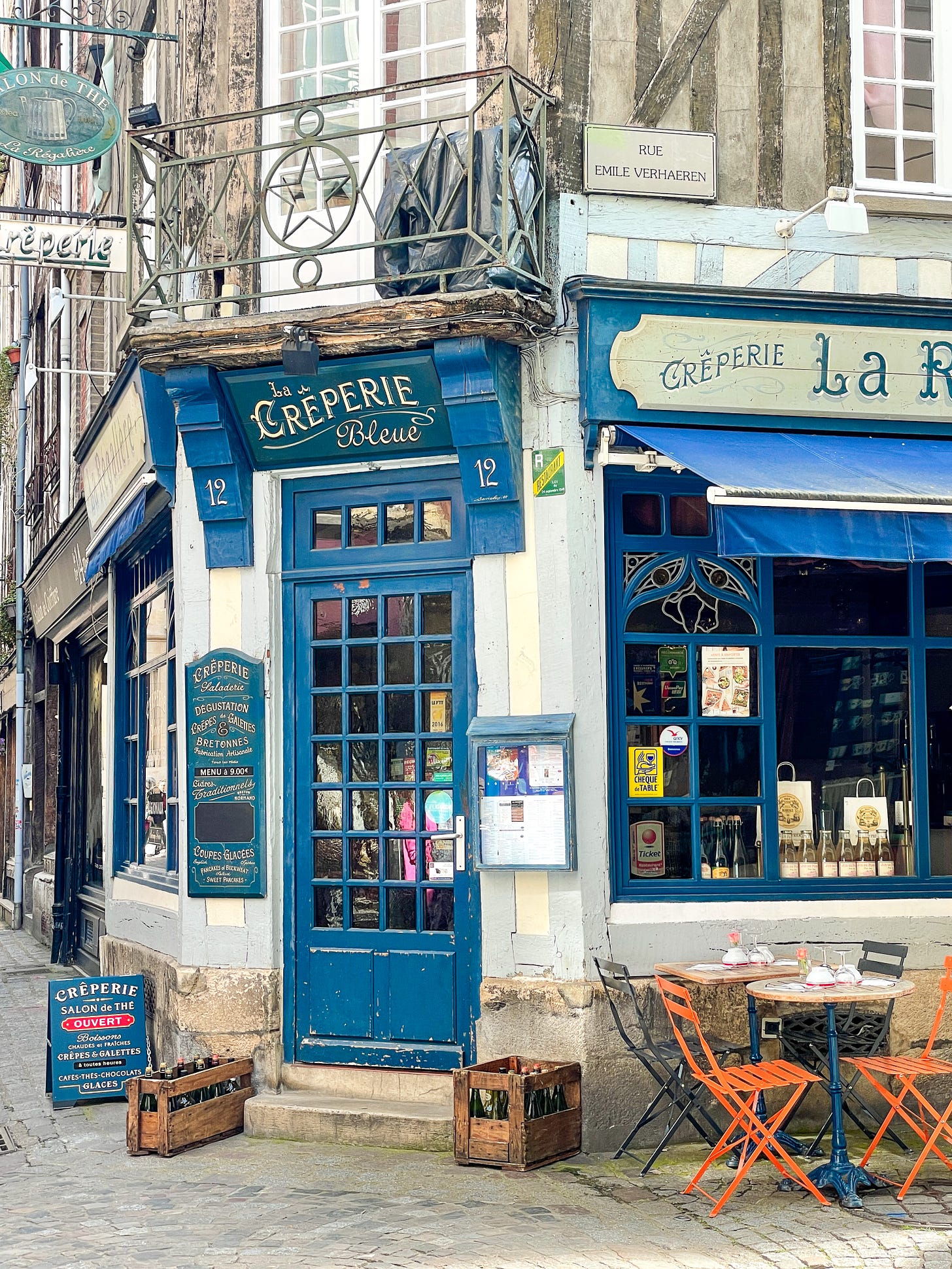{Rennes, France}
Was I talking about crêpes when I left off? I think I was…it is difficult not to talk about crêpes when you are in Brittany: you can’t throw a dead cat without hitting a crêperie around these parts. Although technically speaking the true specialty of Brittany is a galette, a savoury crêpe made from buckwheat flour. It is galettes that we have been gorging on, meal after meal.
They are large, brown and lacy - fried in butter, so surprisingly rich. And crisp. In fact, the word crêpe was originally crêspe, meaning crisp. The most traditional crêpes are ham and cheese - either Gruyère or Emmenthaler cheese seems most common (add an egg on top and it’s a galette complète) - but my favorite is goat cheese and honey.
The varieties of sweet crêpes are seemingly endless, from very simple - just sugar, Nutella, chestnut cream or caramel - to the extremely complex. I’m a fan of simple - give me a crêpe with a little lemon juice and a sprinkling of sugar and I am very happy indeed.
(They even make appetizers out of crêpes - baked and crumbled, they are turned into crêpe chips. I assume it’s a good way to use up those crêpes that turn out not-quite-perfect. I like a culture that doesn’t waste food, you know? So many delicious French specialties are made from leftovers, like almond croissants and French toast (pain perdu - literally, lost bread).
Anyway, Brittany hasn’t been all crêpes. There were cookies, too. Ha HA.
And beautiful things - of course there were beautiful things. Like the lovely seaside town of Saint-Malo, with its historic ramparts.
And Mont-Saint-Michel. I mean, look at that…
Mont Saint Michel is one of the most-visited places in France. A site of pilgrimage for centuries, it is a small town built upon an island with a stunning Medieval abbey at the top. For parts of the year it is surrounded by water when the tides come in. In old days, the abbey was only reachable when the tide was out - now there is a bridge that connects it to the mainland. The tides on this day were decidedly less than dramatic, and so the island was never completely, or even partially, surrounded by water. C’est la vie! I don’t think the island was one whit less dramatic simply surrounded by sand.
That said, if we had known the high tide would be so anticlimactic, we perhaps would not have been in such a rush to get to the top of the island. I had been to Mont-Saint-Michel once before and had distinct memories of it being a difficult uphill climb. However, the climb when I was 18 was nothing compared to the climb now that I am 51. It was a struggle. To be fair, it was an unusually hot spring day and we encountered two people who had become overwhelmed by the heat, one of whom was being attended by medics. Still, it was a relief to enter the Benedictine abbey at the top of the island, and let the insulating stones work their cooling magic. The abbey itself is very beautiful, with an unusual double cloister surrounding a grassy square at the very top.
There is a main street that winds up and down the island, which is usually very crowded and lined with cafes and touristy shops. If you had asked me what I remembered about Mont-Saint-Michel from my first visit there (besides the climb), my answer would have been: I remember this street, and the crowds, and I remember them cooking something in a storefront, and everyone stopping to watch. I don’t remember what they were cooking exactly, but I remember it was a specialty, something you weren’t supposed to be able to get anywhere else.
Omelettes, it turns out. They were cooking omelettes. Specifically les omelettes de la Mère Poulard. The most famous omelettes in France, so it seems - so famous, it is said, that superstition says that if a French presidential candidate visits the island and does not consume Mère Poulard’s omelette, he will lose the election.
Mère Poulard was Annette Poulard (1851-1931), who owned an inn at the base of Mont-Saint-Michel. Mère - which means mother in French - was in this case used in an honorary sense: Mère was the title given to particularly talented female chefs in the 19th century in France. Her omelette is close to a souffle - each one is beaten for a full five minutes before baking over an open fire. They are certainly a sight to behold - fluffy and golden - and it is fun to marvel at the arm strength required by the cooks…but at close to forty dollars each, a splurge. And since I certainly have no plans to run for President of France anytime soon, I thought it was ok to pass.
Mère Poulard’s other specialty, though, was cookies. Sablés Bretonnes, specifically -Breton butter cookies - and they sell them by the tin-full at Mont-Saint-Michel, in a variety of flavors. They are a delight, and each one is stamped with “1888” the year that Mère Poulard opened her inn.
XO
PS - Off to Normandy. I hear they have crêpes there, too. You can’t just quit them cold turkey, you know. It’s dangerous.


